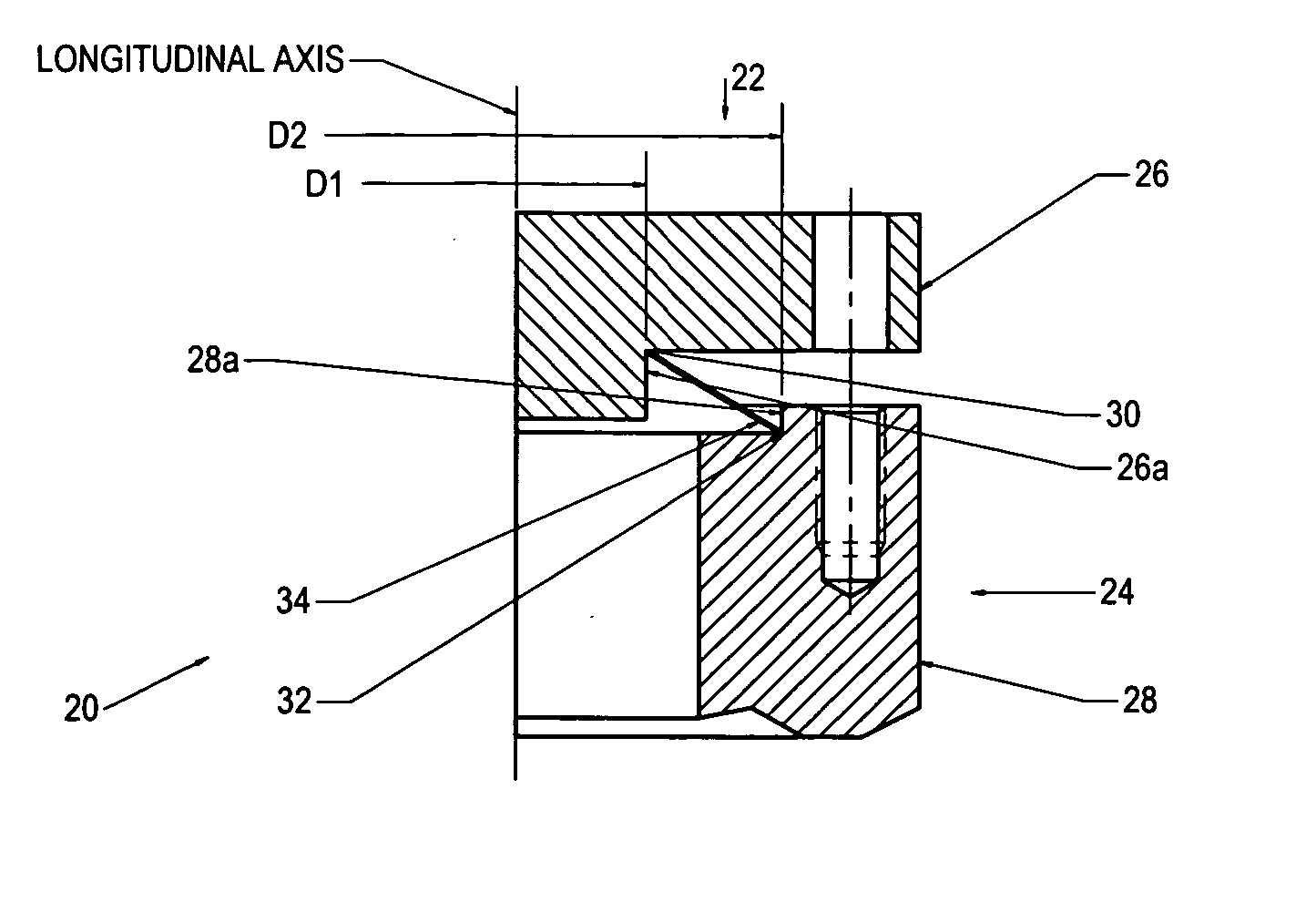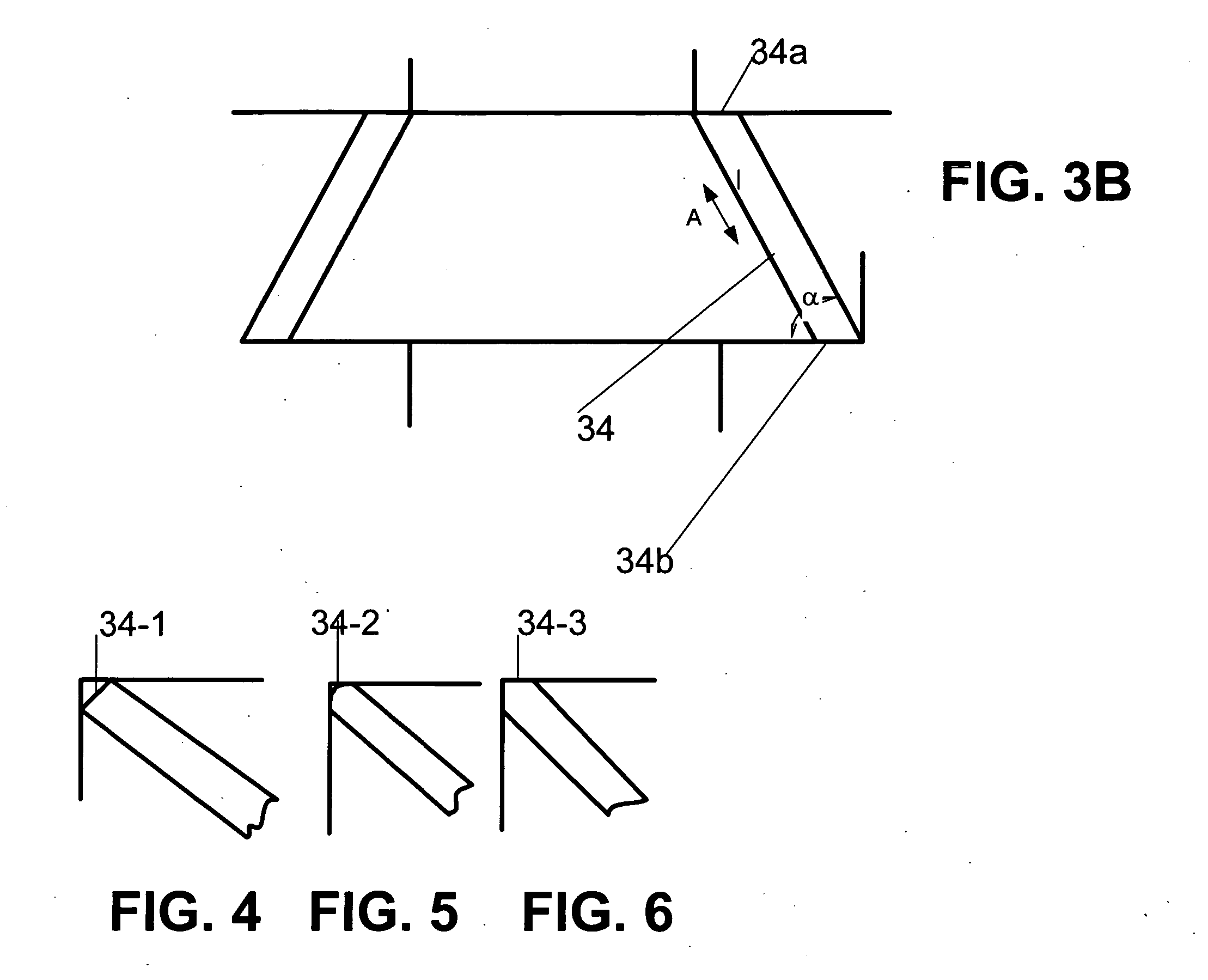Sealing assembly with a diagonal seal
a sealing assembly and diagonal seal technology, applied in the direction of fluid pressure sealing joints, hose connections, mechanical appliances, etc., can solve the problems of large dead volume, large volume, complicated configuration, etc., and achieve the effect of preventing the occurrence of virtual leakage, simple assembly and reliable operation
- Summary
- Abstract
- Description
- Claims
- Application Information
AI Technical Summary
Benefits of technology
Problems solved by technology
Method used
Image
Examples
Embodiment Construction
[0032] A sealing system according to one embodiment of the invention is shown in FIGS. 1 and 2, where FIG. 1 is a fragmental longitudinal sectional view of a sealing system illustrating positions of the parts prior to tightening the seal, and FIG. 2 is a view similar to FIG. 1 illustrating positions of the parts after the seal is tightened. FIGS. 1 and 2 show only the right half-part of the sealing system since the left half-part is symmetrical. In the embodiment of FIGS. 1 and 2, the sealing member has a regular shape and is made in the form of a truncated cone.
[0033] As can be seen from the drawings, the sealing system of FIGS. 1 and 2 that in general is designated by reference numeral 20 is characterized by extreme simplicity and low manufacturing cost. The system 20 consists of two interconnectable clamping or flanged members, hereinafter referred to as flanged members 22 and 24 having flanges 26 and 28 with cylindrical shoulders 26a and 28a. Each shoulder forms a corner with i...
PUM
 Login to View More
Login to View More Abstract
Description
Claims
Application Information
 Login to View More
Login to View More - R&D
- Intellectual Property
- Life Sciences
- Materials
- Tech Scout
- Unparalleled Data Quality
- Higher Quality Content
- 60% Fewer Hallucinations
Browse by: Latest US Patents, China's latest patents, Technical Efficacy Thesaurus, Application Domain, Technology Topic, Popular Technical Reports.
© 2025 PatSnap. All rights reserved.Legal|Privacy policy|Modern Slavery Act Transparency Statement|Sitemap|About US| Contact US: help@patsnap.com



